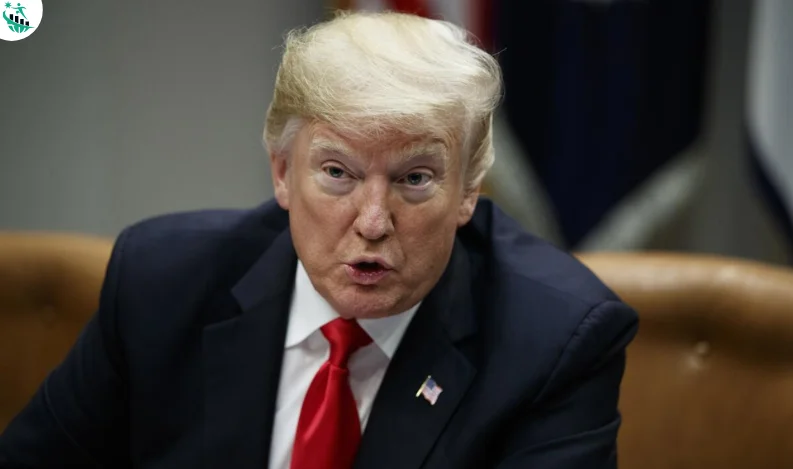
Trump’s Trade War Rekindles Urgency Around Upfronts as Advertisers Brace for Economic Volatility
As legacy media giants kick off their annual Upfronts—a pivotal period where advertisers commit to year-long campaigns—executives are grappling with mounting uncertainty driven by President Donald Trump’s escalating trade war, rising inflation, and fragile consumer sentiment.
Companies such as NBCUniversal, Fox Corp., and Warner Bros. Discovery are staging major presentations this week, joined for the second year by Amazon Prime Video and Netflix, while Paramount Global wrapped its pitch last week. The stakes are higher than ever as media buyers prepare for shifting economic winds that could reshape advertising budgets across sectors.
Trade War Creates Real-Time Ad Volatility
Trump’s steep 145% tariffs on Chinese goods, announced last month, have reverberated through the advertising industry, with chief marketing officers (CMOs) now engaged in intense scenario planning. The unpredictable nature of tariff impacts is forcing companies to adapt quickly, sometimes reversing ad decisions within days.
In one such case, Disney Advertising President Rita Ferro revealed that a $1.5 million order from a mobile phone brand was canceled on a Friday due to tariff concerns—only to be reinstated on Monday after smartphones were exempted from the policy.
“It’s literally in real time what’s happening,” Ferro said, describing the makeshift ‘war rooms’ CMOs have set up to navigate fluctuating regulations and consumer behavior.
Despite the high-stress environment, media ad leaders maintain that advertising remains essential, even during economic turbulence. “People still need to sell, still need to deliver products,” Ferro added. “They just need to do it with sharper focus.”
Ad Spending: Resilient, Yet Cautiously Calculated
Executives from Fox, WBD, and Paramount say they haven’t yet seen a “material pullback” in advertising commitments. But the uncertainty is palpable.
“Every client has a plan, but no one’s jumping to pull back without a direct hit,” said Jeff Collins, President of Ad Sales at Fox. “The lesson from Covid is not to overreact too quickly.”
Still, automotive and retail ad sectors have already trimmed their spending, according to data firm EDO, though interestingly, ad effectiveness is surging as consumer concerns about rising prices sharpen their attention. For instance, home appliance brands cut ad spend by 30%, but consumer engagement with those ads rose by 77%.
Upfronts: More Relevant Than Ever
Upfronts—long a staple of the traditional TV ad cycle—have faced questions in recent years about their relevance in a streaming-dominated world. But executives argue the current economic climate makes these commitments even more valuable.
“This is exactly the time not to quit advertising,” said Kevin Krim, CEO of EDO. “You’ve got to try harder, not capitulate.”
Krim noted that advertisers are no longer buying just mass audience size—they’re looking for targeted, data-backed outcomes. “Advertisers want to buy very specific audiences. That’s why real-time, granular insights are critical.”
With companies like Meta, Google, and Amazon showing early signs of ad business strain, traditional media may have a chance to reassert value—particularly through live events, sports, and award shows, which continue to deliver massive real-time audiences.
Sports and Signature Content Lead the Charge
Executives point to live sports as the crown jewel of this year’s Upfronts. NBCUniversal’s Gina Reduto called it the “halo of live TV,” while others emphasized the consistent draw of franchises like the Super Bowl, Olympics, and World Cup.
Scripted shows with cultural clout, like “The White Lotus” on HBO, also retain strong appeal. These are being marketed alongside streaming platforms as part of integrated ad offerings that blend reach with flexibility.
NBCUniversal Chairman of Global Advertising Mark Marshall previously described Upfronts as an opportunity for advertisers to lock in “franchise positions” at desirable rates while retaining flexibility.
Tariffs Add New Layer to Industry Headwinds
The advertising industry is still contending with declines in traditional TV subscriptions, a lingering aftermath of the Covid-19 pandemic, and the resolution of the Hollywood strikes. The trade war adds a new and complex layer to those challenges.
Data from eMarketer predicts a decline in traditional TV ad spending by as much as $4.12 billion, depending on how severely tariffs hit consumer markets. By contrast, streaming ad spend is projected to rise by $1 billion, thanks to its agility and increasing prominence in advertiser strategies.
This shift could give advertisers more leverage in pricing negotiations, except in sports, where demand remains consistently high. Analysts believe that media firms most affected by subscriber losses may have to lower rates to stay competitive.



Recent Comments:
No comments yet.